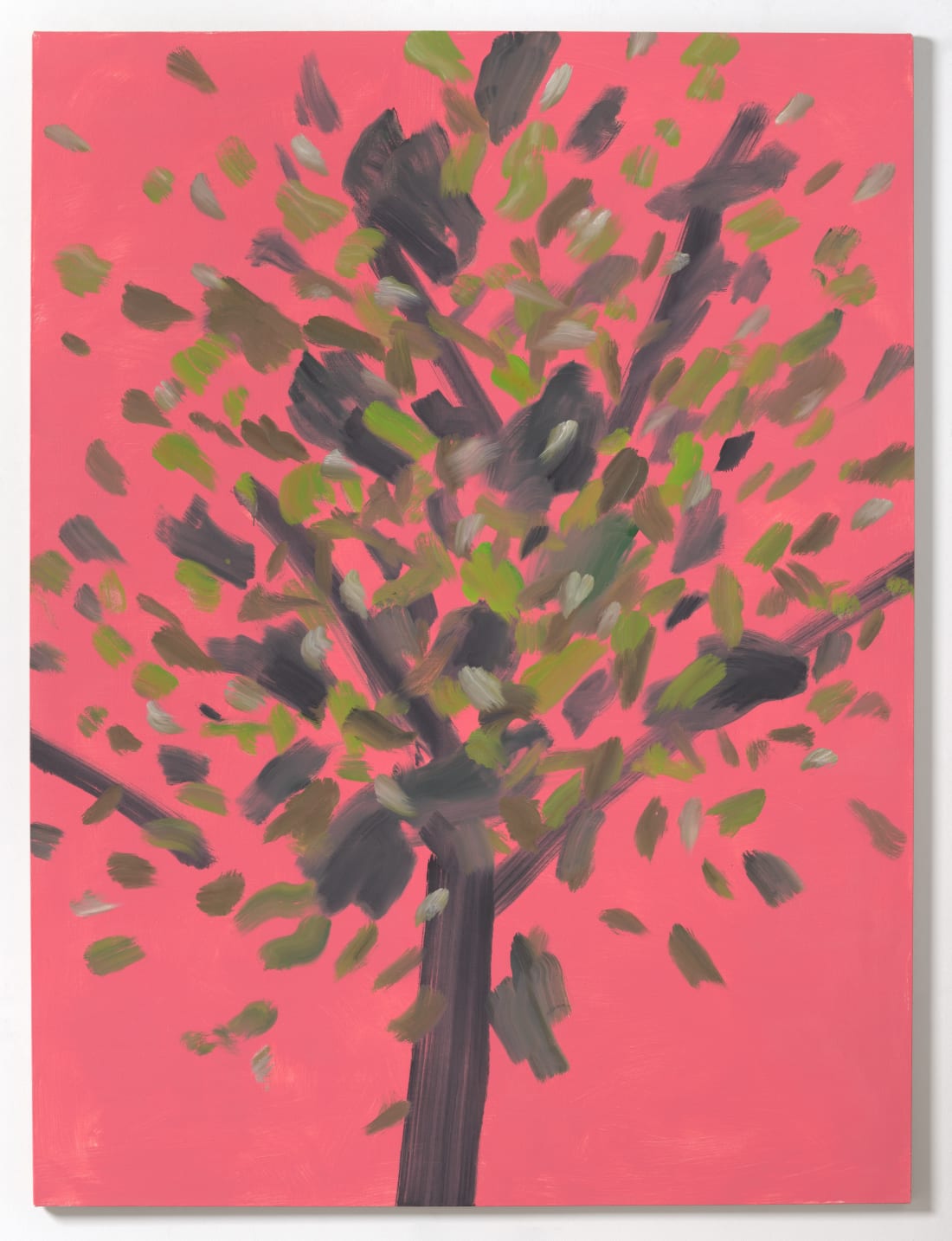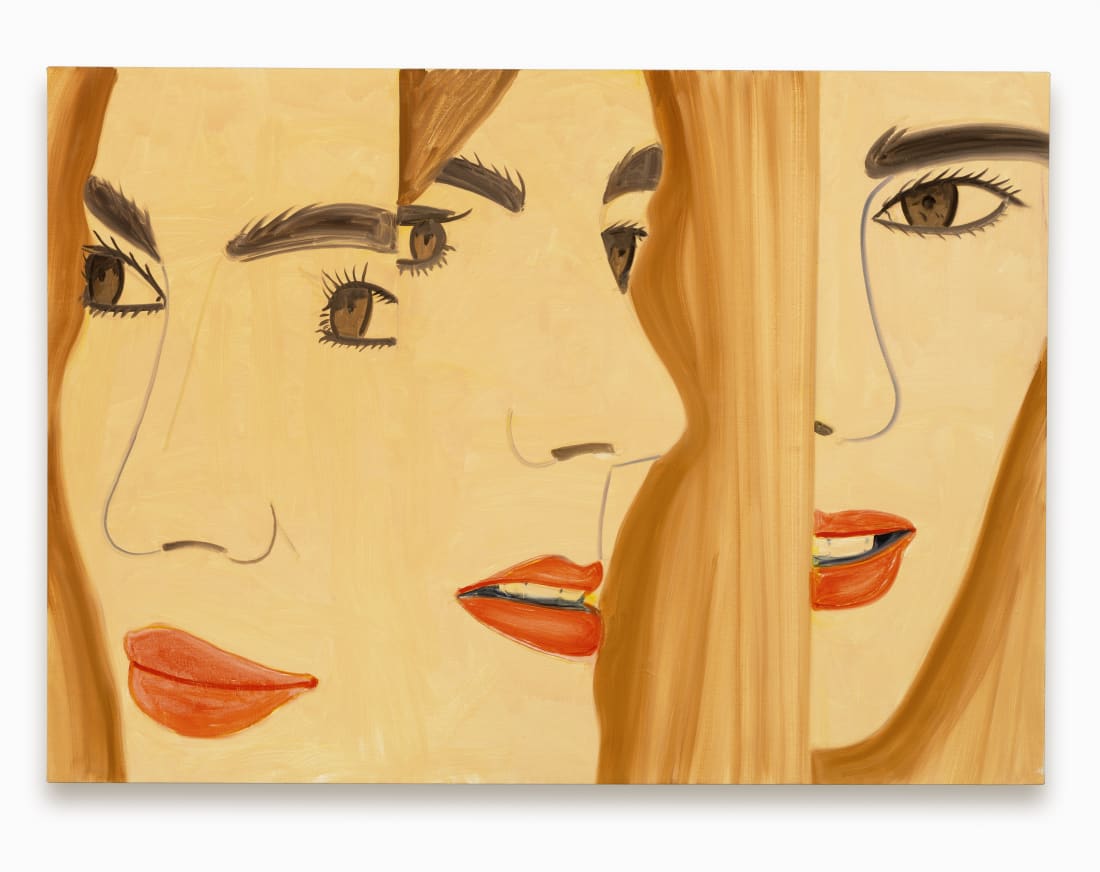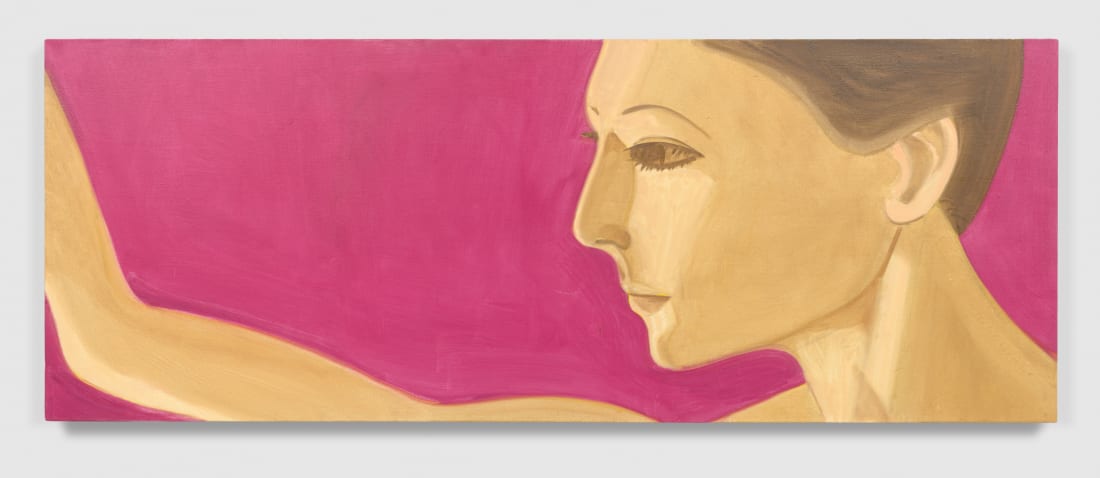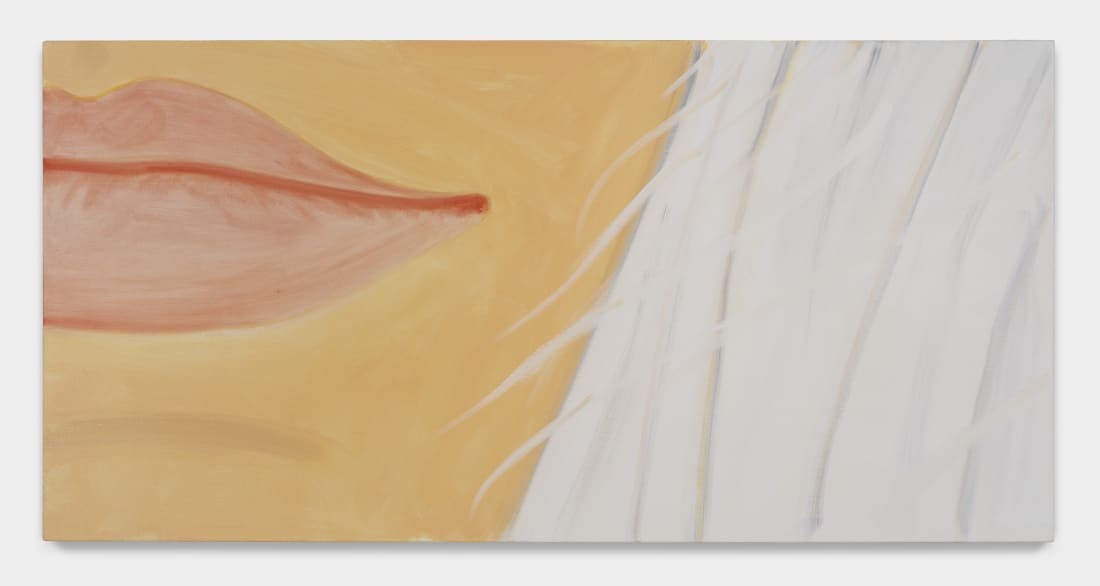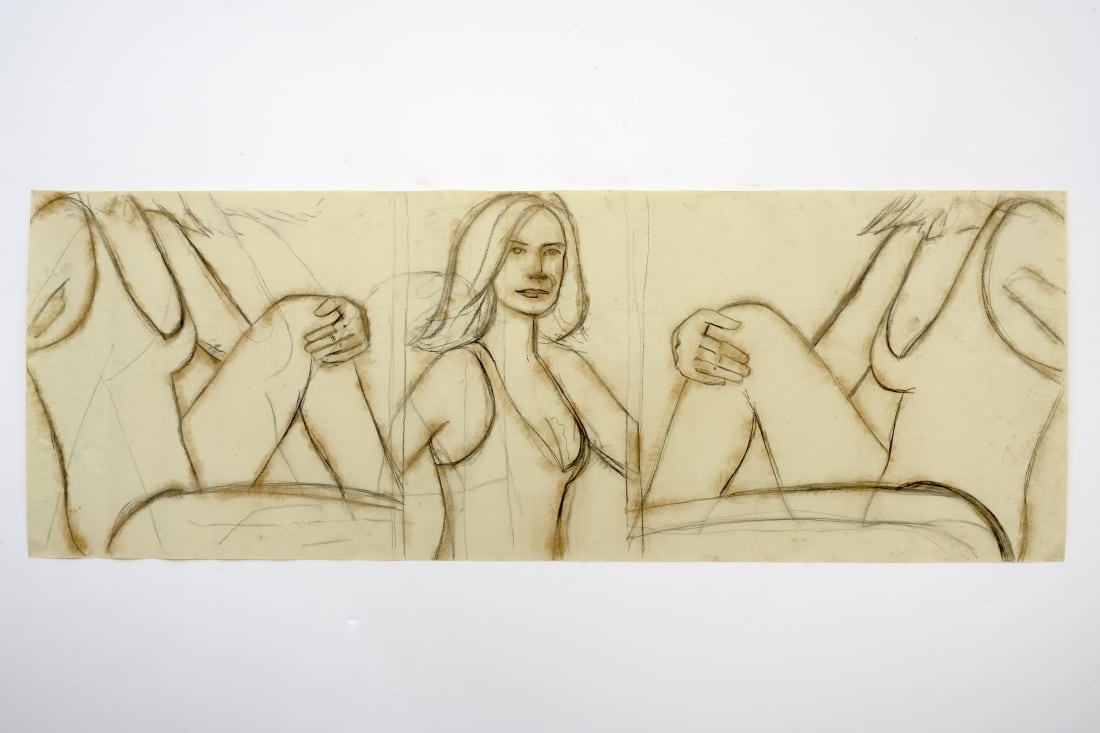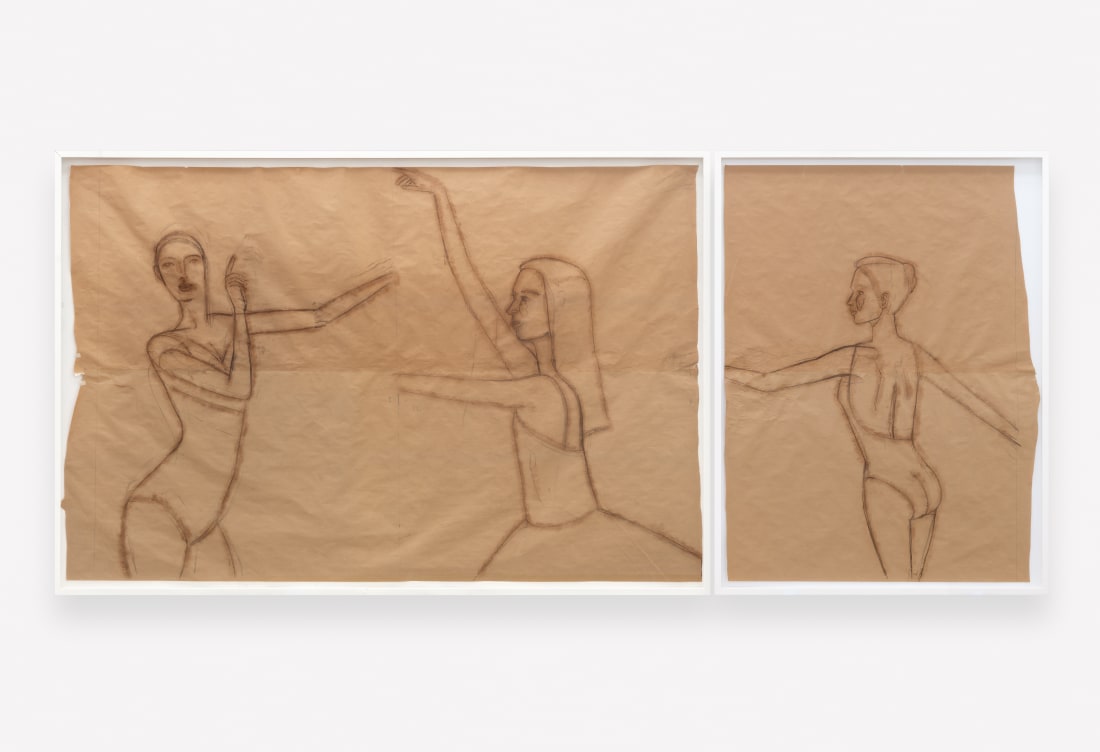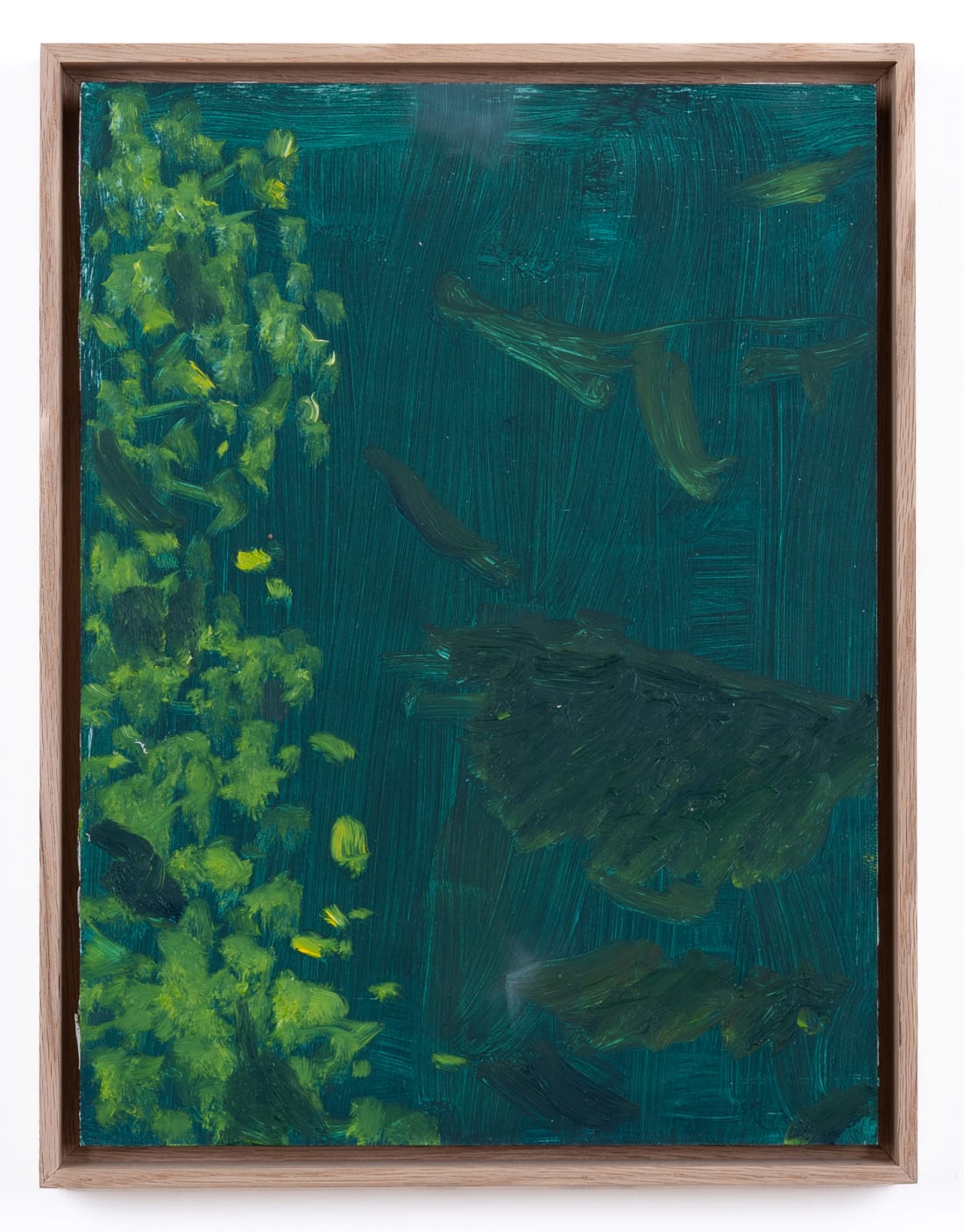
Alex Katz Orange and Black, 2006
In the early 1950s, the New York painter Alex Katz developed his stylised aesthetic in reaction to Abstract Expressionism, finding his own distinctive resolution between formalism and representation. He makes paintings in which line and form are expressed through carefully composed strokes and planes of flat colour. The landscape Orange and Black (2006) is an example of Katz’s lifelong desire to paint the ‘immediate present’. The trees silhouetted against a glowing, vividly orange sky evoke a particular time of day, capturing a moment in time that is at once unique and universal. To achieve this effect, Katz focuses on light rather than colour: ‘the colours are irrelevant,’ he explains. ‘I can change the colours as long as I’ve got the light.’ His discovery of painting ‘en plein air’ while studying at the Skowhegan School in Maine was a decisive turning point for the American painter. At Skowhegan, suddenly faced with the forests, meadows and lakes of the surrounding landscape, he felt an unexpected sense of spontaneity and liberation.
Alex Katz’s major career retrospective, Gathering, is currently on view at the Solomon R. Guggenheim Museum in New York until February 2023.
More works by Alex Katz
Explore current exhibitions

Explore gallery artists
-
Cory Arcangel
-
Jules de Balincourt
-
Stephan Balkenhol
-
Ali Banisadr
-
Miquel Barceló
-
Alvaro Barrington
-
Georg Baselitz
-
Oliver Beer
-
Joseph Beuys Estate
-
Marc Brandenburg
-
Lisa Brice
-
Jean–Marc Bustamante
-
Jordan Casteel
-
Heemin Chung
-
Tony Cragg
-
Richard Deacon
-
Marcel Duchamp
-
Mandy El–Sayegh
-
VALIE EXPORT
-
Harun Farocki Estate
-
Sylvie Fleury
-
Adrian Ghenie
-
Gilbert & George
-
Amos Gitaï
-
Antony Gormley
-
Han Bing
-
Hans Josephsohn Estate
-
Donald Judd Foundation
-
Martha Jungwirth
-
Ilya & Emilia Kabakov
-
Lee Kang So
-
Alex Katz
-
Anselm Kiefer
-
Imi Knoebel
-
Wolfgang Laib
-
Jonathan Lasker
-
Roy Lichtenstein
-
Robert Longo
-
Liza Lou
-
Marcin Maciejowski
-
Robert Mapplethorpe Foundation
-
Jason Martin
-
Bjarne Melgaard
-
Vera Molnár
-
Ron Mueck
-
Patrick Neu
-
Nick Oberthaler
-
Eva Helene Pade
-
Irving Penn Foundation
-
Elizabeth Peyton
-
Jack Pierson
-
Rona Pondick
-
Imran Qureshi
-
Arnulf Rainer
-
Robert Rauschenberg Foundation
-
Daniel Richter
-
Gerwald Rockenschaub
-
Megan Rooney
-
James Rosenquist Estate
-
Tom Sachs
-
David Salle
-
Markus Schinwald
-
Sean Scully
-
Raqib Shaw
-
Andreas Slominski
-
Joan Snyder
-
Sturtevant Estate
-
Emilio Vedova Foundation
-
Banks Violette
-
Not Vital
-
Andy Warhol
-
Lawrence Weiner
-
Robert Wilson
-
Erwin Wurm
-
Zadie Xa
-
Yan Pei–Ming
-
Cory Arcangel
-
Jules de Balincourt
-
Stephan Balkenhol
-
Ali Banisadr
-
Miquel Barceló
-
Alvaro Barrington
-
Georg Baselitz
-
Oliver Beer
-
Joseph Beuys Estate
-
Marc Brandenburg
-
Lisa Brice
-
Jean–Marc Bustamante
-
Jordan Casteel
-
Heemin Chung
-
Tony Cragg
-
Richard Deacon
-
Marcel Duchamp
-
Mandy El–Sayegh
-
VALIE EXPORT
-
Harun Farocki Estate
-
Sylvie Fleury
-
Adrian Ghenie
-
Gilbert & George
-
Amos Gitaï
-
Antony Gormley
-
Han Bing
-
Hans Josephsohn Estate
-
Donald Judd Foundation
-
Martha Jungwirth
-
Ilya & Emilia Kabakov
-
Lee Kang So
-
Alex Katz
-
Anselm Kiefer
-
Imi Knoebel
-
Wolfgang Laib
-
Jonathan Lasker
-
Roy Lichtenstein
-
Robert Longo
-
Liza Lou
-
Marcin Maciejowski
-
Robert Mapplethorpe Foundation
-
Jason Martin
-
Bjarne Melgaard
-
Vera Molnár
-
Ron Mueck
-
Patrick Neu
-
Nick Oberthaler
-
Eva Helene Pade
-
Irving Penn Foundation
-
Elizabeth Peyton
-
Jack Pierson
-
Rona Pondick
-
Imran Qureshi
-
Arnulf Rainer
-
Robert Rauschenberg Foundation
-
Daniel Richter
-
Gerwald Rockenschaub
-
Megan Rooney
-
James Rosenquist Estate
-
Tom Sachs
-
David Salle
-
Markus Schinwald
-
Sean Scully
-
Raqib Shaw
-
Andreas Slominski
-
Joan Snyder
-
Sturtevant Estate
-
Emilio Vedova Foundation
-
Banks Violette
-
Not Vital
-
Andy Warhol
-
Lawrence Weiner
-
Robert Wilson
-
Erwin Wurm
-
Zadie Xa
-
Yan Pei–Ming
Cookies allow us to provide you with useful features and to measure performance in order to improve your experience. By clicking 'Accept all', you agree to the use of all cookies. By clicking 'Manage Cookies', you only agree to the use of selected cookie categories. For more information, see our Privacy Policy.
Your shopping bag
Get exclusive updates from Thaddaeus Ropac
Sign up for updates
We'll be in touch with you shortly
-
Cory Arcangel
-
Jules de Balincourt
-
Stephan Balkenhol
-
Ali Banisadr
-
Miquel Barceló
-
Alvaro Barrington
-
Georg Baselitz
-
Oliver Beer
-
Joseph Beuys Estate
-
Marc Brandenburg
-
Lisa Brice
-
Jean–Marc Bustamante
-
Jordan Casteel
-
Heemin Chung
-
Tony Cragg
-
Richard Deacon
-
Marcel Duchamp
-
Mandy El–Sayegh
-
VALIE EXPORT
-
Harun Farocki Estate
-
Sylvie Fleury
-
Adrian Ghenie
-
Gilbert & George
-
Amos Gitaï
-
Antony Gormley
-
Han Bing
-
Hans Josephsohn Estate
-
Donald Judd Foundation
-
Martha Jungwirth
-
Ilya & Emilia Kabakov
-
Lee Kang So
-
Alex Katz
-
Anselm Kiefer
-
Imi Knoebel
-
Wolfgang Laib
-
Jonathan Lasker
-
Roy Lichtenstein
-
Robert Longo
-
Liza Lou
-
Marcin Maciejowski
-
Robert Mapplethorpe Foundation
-
Jason Martin
-
Bjarne Melgaard
-
Vera Molnár
-
Ron Mueck
-
Patrick Neu
-
Nick Oberthaler
-
Eva Helene Pade
-
Irving Penn Foundation
-
Elizabeth Peyton
-
Jack Pierson
-
Rona Pondick
-
Imran Qureshi
-
Arnulf Rainer
-
Robert Rauschenberg Foundation
-
Daniel Richter
-
Gerwald Rockenschaub
-
Megan Rooney
-
James Rosenquist Estate
-
Tom Sachs
-
David Salle
-
Markus Schinwald
-
Sean Scully
-
Raqib Shaw
-
Andreas Slominski
-
Joan Snyder
-
Sturtevant Estate
-
Emilio Vedova Foundation
-
Banks Violette
-
Not Vital
-
Andy Warhol
-
Lawrence Weiner
-
Robert Wilson
-
Erwin Wurm
-
Zadie Xa
-
Yan Pei–Ming






